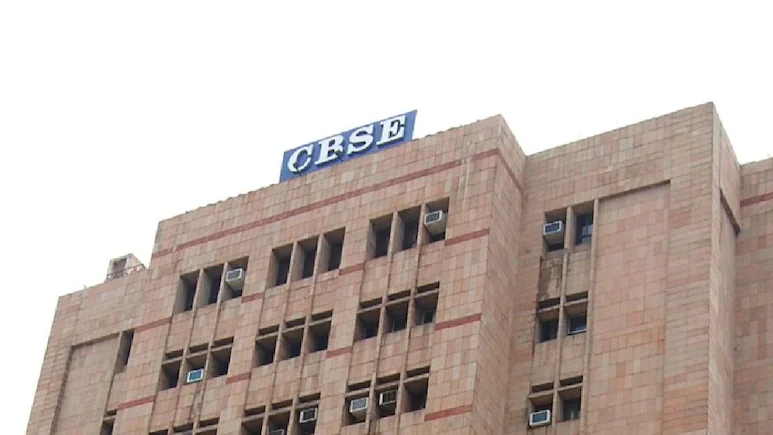New Initiative Aims to Ease Exam Pressure and Enhance Learning Experience
The Central Board of Secondary Education (CBSE) has announced a significant change in its examination policy, allowing Class 10 students to take board exams twice a year starting from 2026. This initiative aims to alleviate the pressures associated with a single high-stakes examination while providing students with additional opportunities to improve their academic performance.
According to officials, the first examination will be conducted in February and will be mandatory for all students. In contrast, the second examination in May will be optional, catering to those who desire to enhance their scores. This new framework aligns with the recommendations set forth in the recent National Education Policy (NEP), emphasizing a more flexible approach to learning and assessment.
CBSE Examination Controller, Sanyam Bhardwaj, stated, “The first phase will be conducted in February, and the results will be announced in April. The second phase will occur in May, with results released in June.” This structure not only ensures timely results but also gives students the chance to retake specific subjects if they wish.
Understanding the New Exam Structure and Its Implications
The move to introduce two board exams per year is a part of the CBSE’s ongoing efforts to modernize educational assessments and create a more learner-friendly environment. With the first phase being compulsory, every student will have the opportunity to build a solid foundation in their knowledge base. The optional second phase allows those who may not have performed to the best of their ability on the first attempt a chance to improve their results in any three subjects, including science, mathematics, social science, and languages.
Students from winter-bound schools will also receive the option to appear for the board exams in either phase, further providing flexibility in scheduling. It is important to note that the internal assessment for these students will still be conducted once during the academic year, promoting consistent performance evaluation without overwhelming the students with multiple assessments.
The decision to implement this dual examination system comes after extensive consultations and feedback from various stakeholders, including educators, parents, and students. The draft norms were presented for public review in February, allowing for community input on how best to shape the educational landscape going forward.
Why the Change Was Necessary: Addressing the High-Stakes Nature of Exams
The rationale behind this significant educational reform is rooted in the desire to mitigate the “high-stakes” environment that currently surrounds board examinations. Traditional single-attempt exams can lead to extreme pressure for students, impacting their mental well-being and overall learning experience. By allowing multiple chances to take the exams, CBSE aims to create a more supportive atmosphere conducive to learning.
Moreover, the NEP has provided a visionary framework for transforming India’s educational system, promoting inclusivity and flexibility. By enabling schools to adopt an assessment model that reflects ongoing learning rather than a one-time evaluation, the policy encourages a shift towards continuous assessment and holistic development of students.
As per the report by NDTV, this new approach aligns with the broader educational reforms envisioned in the NEP, which aims to create a vibrant, student-centered learning ecosystem.
Potential Challenges and the Road Ahead
Despite the numerous advantages of this new examination structure, challenges still loom on the horizon. Schools will need to adjust their curricula and teaching methodologies to accommodate the revised timeline for assessments effectively. Educators may require additional training to implement these changes and ensure that the quality of education remains high.
Furthermore, there may be concerns regarding the increased workload for students who choose to take both exams. Balancing preparation across two sets of board exams may require more strategic planning and support from educational institutions and families alike.
In response to these challenges, CBSE is expected to roll out guidelines and resources for schools to facilitate a smooth transition to the new examination format. Ongoing training for teachers, as well as support for students and their families, will be crucial in making this initiative successful.
Looking Forward: A New Era for Education in India
The introduction of a two-exam system for Class 10 students marks a progressive step toward a more balanced and realistic assessment of student learning. By focusing on reducing exam-related stress and providing multiple opportunities for success, the CBSE is paving the way for an educational environment that prioritizes student well-being and growth.
As the education system evolves, it will be essential for students, parents, and educators to stay informed about these changes and actively participate in the ongoing dialogue surrounding educational policies. For more information about the National Education Policy and its scope, visit the Ministry of Education’s website or explore articles on The Hindu for further insights.
In summary, the shift to a dual board exam system reflects a broader commitment to educational reform and recognizes the need for assessments that serve the interests of learners. As we move toward 2026, all eyes will be on the CBSE to see how effectively they implement this new structure and the impact it will have on students’ academic journeys.
DISCLAIMER
We have taken every measure to ensure that the information in this article and on our social media platforms is accurate, verified, and obtained from reliable sources. For feedback or complaints, please contact us at info@hamslive.com.


